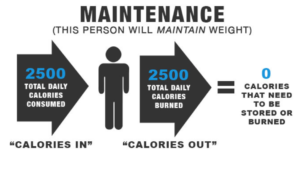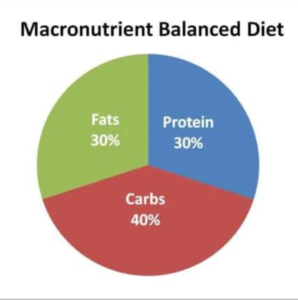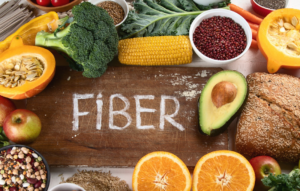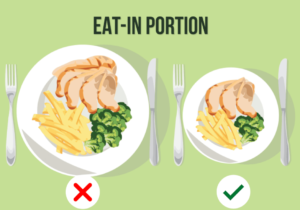Introduction:
In the journey towards weight loss, meal planning stands as a cornerstone. It not only helps in managing calorie intake but also ensures that essential nutrients are consumed, leading to sustainable and healthy weight loss. However, devising a meal plan can be overwhelming, especially with the abundance of information available. In this comprehensive guide, we will delve into the fundamentals of healthy meal planning for weight loss, providing practical tips, and sample meal plans to kickstart your journey towards a healthier you.
Understanding Caloric Needs:

Before embarking on a weight loss journey, it’s essential to grasp the concept of caloric needs. Your daily calorie requirement is influenced by various factors including age, gender, weight, height, and activity level. To determine your specific caloric needs, you can utilize online calculators or seek guidance from a healthcare professional. Understanding your caloric needs serves as the foundation for creating an effective meal plan tailored to your goals.(Healthy Meal Planning For Weight Loss)
Balanced Macronutrients:

A balanced meal plan is centered around macronutrients—carbohydrates, proteins, and fats—in appropriate proportions. Each macronutrient plays a distinct role in supporting overall health and facilitating weight management. Carbohydrates serve as the body’s primary energy source, while proteins aid in muscle repair and growth. Fats are essential for cell function and the absorption of fat-soluble vitamins. Striking a balance among these macronutrients is crucial for optimizing health and achieving sustainable weight loss.
Fiber-rich Foods:

Incorporating fiber-rich foods into your diet is paramount for weight loss and overall well-being. Fruits, vegetables, whole grains, and legumes are excellent sources of dietary fiber. Not only do these foods promote feelings of fullness and satiety, but they also help regulate blood sugar levels and support digestive health. Additionally, fiber-rich foods are nutrient-dense and lower in calories, making them ideal choices for individuals looking to shed excess pounds.(Healthy Meal Planning For Weight Loss)
Strategic Meal Timing:

Meal timing plays a pivotal role in weight loss and weight management. Consuming smaller, frequent meals throughout the day can help control hunger and prevent overeating. Aim for three well-balanced main meals and incorporate two to three nutritious snacks between meals. By spacing out your meals and snacks evenly throughout the day, you can keep your energy levels stable and your metabolism revved up, ultimately supporting your weight loss efforts.
Portion Control:

Effective portion control is key to managing calorie intake and achieving weight loss goals. While nutrient-dense foods are essential, consuming them in excessive amounts can impede progress. Utilize tools such as measuring cups, food scales, or visual cues to ensure proper portion sizes. By practicing portion control, you can enjoy a varied and satisfying diet while still maintaining a calorie deficit conducive to weight loss.(Healthy Meal Planning For Weight Loss)
Hydration:

Staying adequately hydrated is often overlooked but critical for successful weight loss. Water not only helps curb hunger but also supports metabolism and aids in digestion. Aim to drink at least eight glasses of water per day, and consider incorporating water-rich foods such as cucumbers, watermelon, and soups into your diet. By prioritizing hydration, you can optimize your body’s natural processes and enhance your weight loss journey.(Healthy Meal Planning For Weight Loss)
Incorporating these fundamental principles into your meal planning approach can set you on the path to achieving your weight loss goals while promoting overall health and well-being. By understanding your caloric needs, prioritizing balanced macronutrient intake, incorporating fiber-rich foods, strategically timing your meals, practicing portion control, and staying hydrated, you can create a sustainable and effective meal plan tailored to your individual needs and preferences.
Sample Meal Plans:
Breakfast:
- Oatmeal topped with berries and almonds
- Greek yogurt
- Green tea
Snack:
- Carrot sticks with hummus
Lunch:
- Grilled chicken salad with mixed greens, cherry tomatoes, cucumber, and balsamic vinaigrette
- Quinoa pilaf
- Sparkling water with lemon
Snack:
- Apple slices with peanut butter
Dinner:
- Baked salmon
- Steamed broccoli
- Brown rice
- Herbal tea
Snack:
- Cottage cheese with pineapple chunks
Tips for Success: (Healthy Meal Planning For Weight Loss)
- Plan Meals Ahead of Time: Set aside time each week to plan your meals. Choose recipes that align with your dietary goals and schedule. By having a plan in place, you’ll be less likely to make impulsive, unhealthy choices when hunger strikes.
- Include a Variety of Foods: Aim for a diverse range of foods to ensure you’re getting all the essential nutrients your body needs. Incorporate fruits, vegetables, whole grains, lean proteins, and healthy fats into your meals. Experiment with different ingredients and recipes to keep things interesting.
- Experiment with Cooking Methods: Explore various cooking methods like grilling, baking, steaming, or stir-frying to prepare healthier meals. These techniques often require minimal added fats and retain the natural flavors and nutrients of the ingredients.
- Listen to Your Body: Pay attention to your body’s hunger and fullness cues. Eat when you’re hungry and stop when you’re satisfied. Avoid eating out of boredom or emotions. Mindful eating can help prevent overeating and promote a healthier relationship with food.
- Mindful Portion Control: Be mindful of portion sizes, especially when dining out or consuming packaged foods. Use measuring cups, food scales, or visual cues to gauge appropriate portion sizes. Opt for smaller plates to help control portion sizes naturally.
- Incorporate Physical Activity: Pair your healthy meal plan with regular physical activity to maximize weight loss results. Aim for a combination of cardiovascular exercise, strength training, and flexibility exercises to improve overall fitness and burn calories.
Conclusion:
Healthy meal planning is a fundamental aspect of achieving sustainable weight loss. By understanding your caloric needs, balancing macronutrients, and making strategic food choices, you can create a meal plan tailored to your goals and preferences. (Healthy Meal Planning For Weight Loss)With careful planning, portion control, and consistency, you’ll be well on your way to achieving your weight loss aspirations and embracing a healthier lifestyle.
